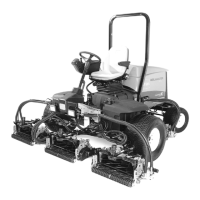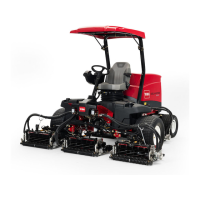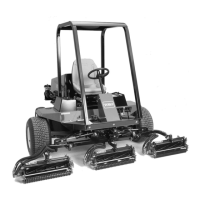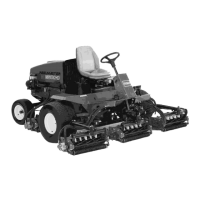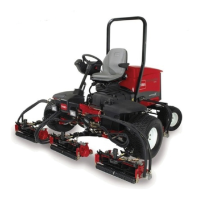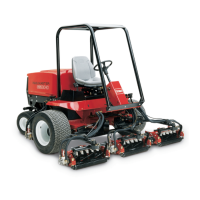Brake Shoe Replacement
The brake linings contain asbestos fibers.
Breathing dust containing asbestos fibers
may be hazardous to your health and may
cause serious respiratory or other bodily
harm. When servicing wheel brake parts, do
not create dust by grinding, sanding or filing
brake linings or by cleaning wheel brake parts
with a dry brush or compressed air. (Use a
water dampened cloth.) Use proper protective
equipment when working with asbestos ma-
terials.
CAUTION
1. Loosen wheel lug nuts. Jack up machine until front
wheel is off of floor. Use jackstands to prevent machine
from falling accidentally. Remove wheel lug nuts and
slide wheel and tire assembly off of studs.
2. Remove brake drum. If drum will not come off easi
ly,
brake shoes may have to be retracted with star nut (see
Brake Adjustment).
3. Remove brake shoe return sprin
g (Fig. 22) by prying
the end of the spring up and over its retaining boss. Use
a brake spring pliers or flat blade screwdriver.
Wear a face shield when removing brake re-
turn spring (Fig. 22). The spring is under ten-
sion and could possibly slip during removal.
CAUTION
4. Remove brake lever retainers (cotter pins) with a slip
joint pliers.
5. Pull strut and lever from brake shoes. Remove brake
shoes by sliding them both on one motion straight down
off cast-iron spider.
6. Remove adjusting screw spring and star wheel as-
sembly.
7. Install new brake shoes (reverse steps 2 - 7) Install
new brake drum if it is severely scored.
8. Install wheel and tire assembly on studs with five (5)
wheelnuts. Tighten wheellug nuts. Remove jack stands
or blocking and lower machine to the floor. Tighten
wheel lug nuts to a torque of 45 - 55 ft-lb.
9. Adjust brakes (see Brake Adjustment).
4
2
5
1
3
Figure 22
1. Return spring 3. Strut and lever 5. Star wheel assembly
2. Cotter pins 4. Adjusting screw spring
Repairs Page 7 - 20 Reelmaster
®
223-D/5100-D/5300-D

